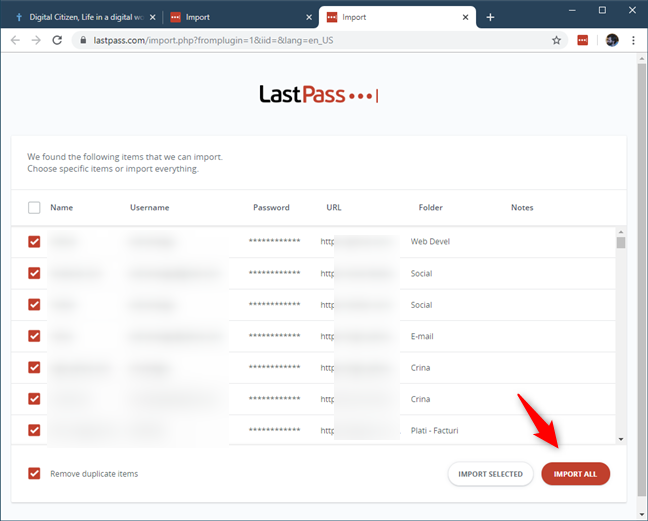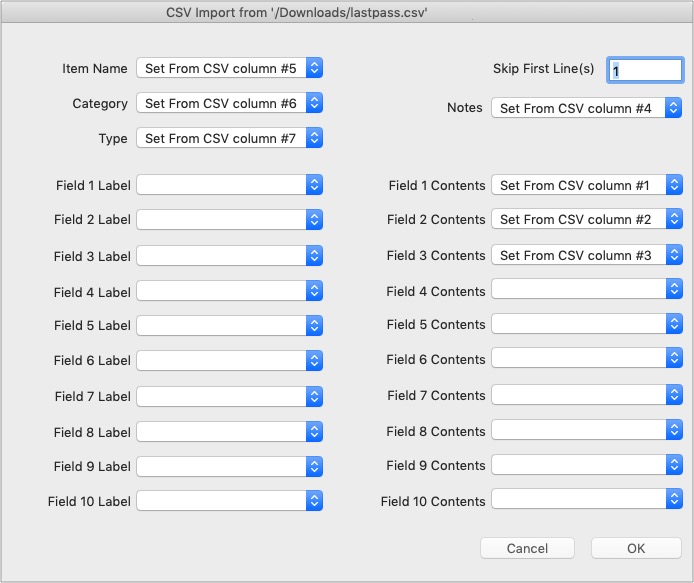

- #Lastpass import from passwordwallet how to#
- #Lastpass import from passwordwallet driver#
- #Lastpass import from passwordwallet archive#
- #Lastpass import from passwordwallet software#
- #Lastpass import from passwordwallet download#
You can use 1Password as an authenticator for any of your accounts that support two-factor authentication. Set up two-factor authentication for your accounts.Start with your most important passwords first, like the ones for your email, financial, and social media accounts. If your LastPass data was part of a breach and you haven’t changed your passwords yet, use 1Password to generate and save new passwords for all your accounts. You’ll use the 1Password browser extension to save and fill passwords on the web.

If you disabled two-factor authentication for your LastPass account, enable it again to secure your account, unless you plan to delete your account. This is important to avoid conflicts with 1Password.
#Lastpass import from passwordwallet how to#
Learn how to use the advanced LastPass migration tools. These tools will help you convert your folders to vaults and import your LastPass passwords, but other item types won’t be imported. You can create vaults in 1Password based on your LastPass folders using the LastPass migration tools for 1Password. Advanced: Import your data using 1Password CLI
#Lastpass import from passwordwallet download#
If you have attachments you want to import, download them from LastPass, then attach them to the items they were previously associated with.
#Lastpass import from passwordwallet software#
If you want to change anything about the import, like importing the data into a different vault, click Undo Import and start again.Īfter you’ve imported your information into 1Password, delete the unencrypted CSV file, then turn on any backup software you turned off earlier. Click Import, then click Show Imported Items.Browse to your downloads folder and select the CSV file you created earlier. Click inside the dotted rectangle to open a file browser.To only import personal items, turn off “Import items in shared folders”. If you’re importing personal data, choose the Personal or Private vault. Choose the vault you want to import your data into.Click your name in the top right and choose Import.Open your browser and sign in to your account on.Attachments aren’t included in the export. The CSV file will be saved to your computer. Click Advanced Options, choose Export, and enter your LastPass password.In the email you received from LastPass, click “Continue export”.Click Advanced Options in the sidebar, then choose Export.To export your data from LastPass, follow these steps on your computer: Form Fills, one-time passwords, and attachments won’t be imported.īefore you export your data from LastPass, temporarily turn off any backup software you may be using, so the unencrypted export file isn’t backed up.

You can also convert them to vaults with the advanced migration tool.
#Lastpass import from passwordwallet driver#

#Lastpass import from passwordwallet archive#
You can review and archive them if you don’t need them. These can likely be found in the Imported Unknown Data vault. To make sure nothing is left behind, 1Password also imports account-related settings and other metadata as Secure Notes. You can find these items in Sharing Center > “Shared with me”, then move them into a private folder to make sure they’re imported. Individual items that are shared with you will not be imported.Private folders will be converted to tags and shared folders will be converted to vaults.If you use LastPass Authenticator, one-time passwords saved in it won't be imported, but you can manually add them to 1Password after you've imported your other data. Files and one-time passwords attached to items will be imported.Bank Accounts, Credit Cards, and other items will become their equivalent item type in 1Password.Your LastPass passwords will become 1Password Login items.When you import from LastPass using the 1Password apps: With the 1Password desktop apps, you can directly import your passwords, Secure Notes, and other items from LastPass. You can contact us to let us know what identity provider you’d like us to support next. If you use another identity provider to sign in with SSO, you’ll need to import your data on. If you use Okta to sign in to your LastPass account, you’ll need to add onepassword://import/login/sso as a sign-in redirect URI for the LastPass application in Okta.


 0 kommentar(er)
0 kommentar(er)
